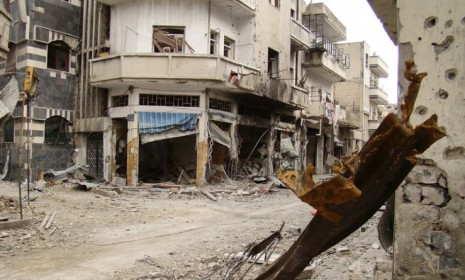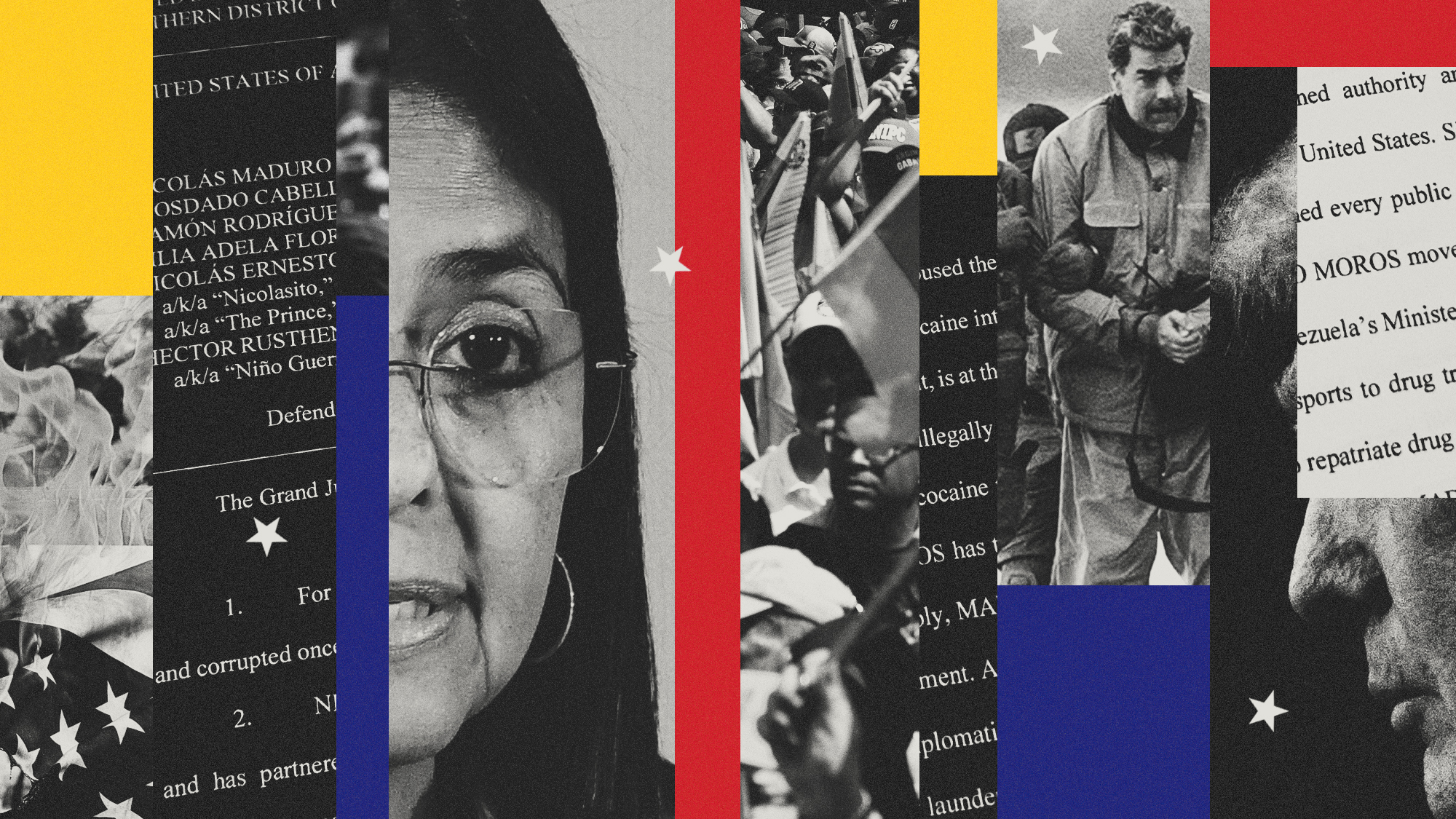What would a Syrian peace look like?
Bashar al-Assad pledges to pull out of opposition strongholds by April 10. But will a U.N.-brokered ceasefire will really take root?

Syrian President Bashar al-Assad has reportedly agreed to a ceasefire deadline proposed by United Nations envoy Kofi Annan. Of course, opposition activists and foreign leaders remain skeptical that Assad will follow through, as the Syrian government has broken promises before. When will we know if Assad is sincere this time? Here, a brief guide to the steps ahead:
What happens now?
Assad has agreed to withdraw his forces from major population centers by April 10. That means he also has to pull out troops and artillery surrounding those cities, including the besieged, battered rebel bastions of Homs, Idlib, and Deraa. Annan urged the U.N. Security Council to endorse the deadline on Monday, in the hope of pressuring Assad to follow through. Russia, which holds veto power, rejected the idea of a formal deadline.
The Week
Escape your echo chamber. Get the facts behind the news, plus analysis from multiple perspectives.

Sign up for The Week's Free Newsletters
From our morning news briefing to a weekly Good News Newsletter, get the best of The Week delivered directly to your inbox.
From our morning news briefing to a weekly Good News Newsletter, get the best of The Week delivered directly to your inbox.
Then what?
Annan wants a total ceasefire across Syria. That means that once Assad has pulled his troops back to their bases, the pressure will be on the opposition to follow suit. "The Syrian government is committed," says Syria's U.N. ambassador, Bashar Jaafari, "but we are expecting Mr. Kofi Annan and some parties in the Security Council also to get the same kind of commitments from the (opposition). A plan wouldn't be successful unless everybody is committed to it."
What else does the peace plan envision?
The aim is a lasting halt in the violence that erupted when Syria's uprising began just over a year ago. The U.N. says 9,000 people have died so far, most of them killed in Assad's violent crackdown against pro-democracy protesters, as well as the armed opposition against his regime. Annan demands that the government stop the repression, and "respect freedom of association and the right to demonstrate peacefully." The deal also calls for Syrians on both sides to "commit to stop the fighting," meaning bombings of pro-regime neighborhoods in Damascus, as well as military installations, should end, as well.
A free daily email with the biggest news stories of the day – and the best features from TheWeek.com
What happens if the violence really does end?
Once the fighting stops, the U.N. would need to hammer out an agreement to send in peace monitors, possibly some 200 people drawn from peacekeeping units already in the region. Next would come talks between the government and the opposition about a new political process. Also, emergency-relief workers who have had scant access to rebel areas, especially those that have suffered through seemingly endless shelling by the military, would be allowed to enter anywhere they were needed during daily two-hour pauses to deliver aid. News media would also be permitted access.
Is there any chance all of these things will happen?
Opposition activists say nothing has changed since Assad vowed to cooperate with Annan. "Today doesn't feel much different than yesterday or the day before, or the day before that," opposition activist Waleed Fares tells Britain's Telegraph. "Shelling and killing" persist. Diplomats are skeptical, too. "We have seen promises made and promises broken," Susan E. Rice, Washington's ambassador to the U.N., tells The New York Times. "The proof is in the actions, not the words." And even if Assad goes along, it's unclear what the end game is, since the peace plan doesn't require Assad to step down. The real question might be whether the opposition can stomach peace if it means prolonging Assad's rule.
Sources: Al-Arabiya, Aljazeera, CNN, New York Times, Telegraph, TIME
-
 ‘Jumping genes': How polar bears are rewiring their DNA to survive the warming Arctic
‘Jumping genes': How polar bears are rewiring their DNA to survive the warming ArcticUnder the radar The species is adapting to warmer temperatures
-
 January’s books feature a revisioned classic, a homeschooler's memoir and a provocative thriller dramedy
January’s books feature a revisioned classic, a homeschooler's memoir and a provocative thriller dramedyThe Week Recommends This month’s new releases include ‘Call Me Ishmaelle’ by Xiaolu Guo, ‘Homeschooled: A Memoir’ by Stefan Merrill Block, ‘Anatomy of an Alibi’ by Ashley Elston and ‘Half His Age’ by Jennette McCurdy
-
 Venezuela’s Trump-shaped power vacuum
Venezuela’s Trump-shaped power vacuumIN THE SPOTLIGHT The American abduction of Venezuelan President Nicolás Maduro has thrust South America’s biggest oil-producing state into uncharted geopolitical waters